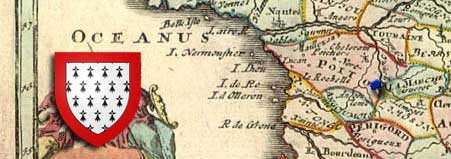Limousin.

Tucked in amongst hills and valleys the region sits on the Plateau de Millevaches. Green pastures are dotted with chestnut-colored Limousin cattle which are prized both for their beef and for their use as draft animals.
Sparsely populated, the largest town is Limoges which dates back to the Roman occupation. It was a mecca of the arts and was well traveled given its location between Paris and Toulouse. On the banks of the Vienne River, half-timbered buildings still line the narrow streets of the city center. Soon the porcelain produced in the town became renowned. Dating to the 13th century, the Château de Rochechouart was once a formidable fortress. It later became a museum.
Erected in the Neolithic age, large stones form the Dolmen de la Côte in Saint-Laurent-sur-Gorre. It is believed to be a burial chamber.
Wood from the oaks grown in Limousin is prized by wine makers when used to make into the barrels necessary to properly ferment their grapes. Pineau des Charentes, a local aperitif similar to sherry, is a local favorite, as is clafouti, a custardy dessert often made with black cherries.
Our ancestors who emigrated from Limousin are listed below. The dates reflect the year they arrived in Canada if known, otherwise it is the date of their earliest appearances in the records there:
- Françoise Dupuis (1670) of Saint-Laurent-sur-Gorre.
- map insert from author's collection
- www.wikipedia.com
